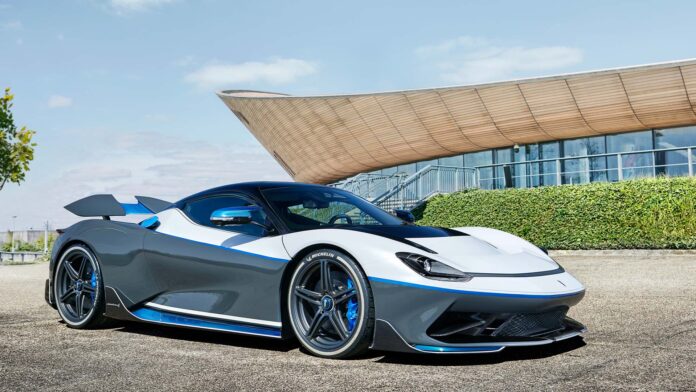A New Shape to Mobility: Electric Vehicles
As long as transportation has been crucial to us, it has taken numerous forms since its discovery. From using bullock carts to travelling in battery-powered automobiles shows how far the development in this sector has come. A form of products that have been frequently mentioned by Indians since the past few years but are very common all over the world are electronic vehicles. They have emerged as an effective means of transport for a sustainable and viable future. These electronic vehicles or EVs rely on rechargeable batteries as their power source which eliminates the dependence on the already depleting traditional fossil fuels.
Journey of the Power Button: Evolution and History of EV
Most of us might think that the concept of EVs is quite new owing to the recent technology and development but it dates back to the year 1835 when Robert Anderson, a British inventor, presented the first electric vehicle in the form of a carriage at an industry conference. Further, Thomas Davenport, an American blacksmith, contributed to the successful invention of electric motor to be used in these vehicles. Around the same period, there were many other scientists and professors who played an important role in the pursuit of electric mobility. However, in the late 1880s, a chemist, William Morrison is known to have created the first “practical” electric vehicle.
During this time and until the 1910s, the usage of electric vehicles was at boom as they were eco-friendly, easy to start and drive, and did not require changing gears (which was apparently complicated) like the gasoline-powered cars.
After the rise also came the disappearance of the battery powered vehicles due to the readily available and cheap gasoline. With the gradual production of the internal combustion engine (ICE) followed the demand for these cars due to less availability of electricity in every area.
Nonetheless, changes can be unpredictable and one major change we have seen since the recent times is the comeback of the electric vehicles. Be it in the form of four-wheelers like cars, buses and trucks, two-wheelers like bikes and scooters, three-wheelers like rikshaws or even major transportations like trains.
In the recent times the major global issues being discussed are global warming, pollution, sustainable development and depletion of natural resources, and to tackle the same, the promotion of use of battery-powered vehicles is at peak in almost every major country. Vehicles that operate using petrol and diesel emit a lot of carbon dioxide, the major cause of global warming and therefore climate change. Developed countries have already almost succeeded in completely replacing these vehicles with EVs while developing ones are progressing in this journey. There was a time when the discovery of Tesla fascinated the world with their electric automated cars. But as of today, there are many companies who have entered this market and brought up their innovations.
A Closer Look: Key Specifications of EVs
As suggested by their name, electronic vehicles use batteries to function. The size of the batteries determines that how long they will go before needing a recharge. Thus, bigger vehicles have bigger batteries. These vehicles do not produce noises or engine sounds, making it a significant specialty. One might not notice when an EV passes by them if they are not looking.
Common to Everything: The Goods and the Bads
On the positive side, as stated numerous times these vehicles have an environment-friendly approach. They are said to have less maintenance costs as compared to the traditional fuel vehicles. They also reduce the expenditure on diesel and petrol. Some vehicles also provide an advanced infrastructure that enhances the user’s driving experience. Nevertheless, there are still underlying concerns to them. Aspects like battery reliability leads to range anxiety where the person is concerned about the battery running out before reaching the destination. Moreover, unfamiliarity to functioning and charging structure causes hindrance to its adoption.
Diversity in Uses: Applications of EVs
Electric trains and buses are widely being opted by the governments all over the world as public transportations to promote ecological mobility. Electric cars are turning out to be a better option for the urban community. Electric bikes that are light in weight are often opted for a fast and speedy transportation. Three-wheelers which are a major part of public transportation in India, are also going electric, eliminating the harmful emissions.
First Thing in Most Minds: Price Range
Many considerations arise when it comes to the price of electric vehicles. They are more expensive than the petrol cars in terms of the upfront cost but the zero fuel costs and less maintenance costs make up for the initial expenditure. Some purchase options and comparisons for the common people in India include the Tata Nexon EV which costs around Rs 15 lakh, while the petrol version costs around Rs 7 lakh, Tata Tiago EV starts at 8.6 lakh and the petrol version starts at 5.6 lakh and many more. In the long run EVs prove to be beneficial as they incur less costs as compared to petrol cars. Moreover, the government provides many subsidies and incentives to encourage their adoption. On the other hand, brands like Tesla, Audi, Porsche, etc. cater to the consumers looking for expensive and luxurious cars.
Future Improvements: What’s next for EVs?
Being an up-and-coming product, electric vehicles hold immense potential in the sector of improvements. The foremost need includes the advancement in the charging structure of the vehicles. Improvements in the electric mechanism and the motor can also prove to be beneficial. Manufacturers may use the innovative technology available to make necessary changes in these vehicles.
Electric vehicles have come up as an essential part of the automotive industry and have marked their place in the same as a green way of mobility. With numerous applications, benefits and cost efficiency, they have proven to be the reason for their encouraged use. Through effective improvements, electronic vehicles will continue to be beneficial and have a positive impact on the environment and the lifestyle of people.
By: Anjum
Write and Win: Participate in Creative writing Contest & International Essay Contest and win fabulous prizes.















